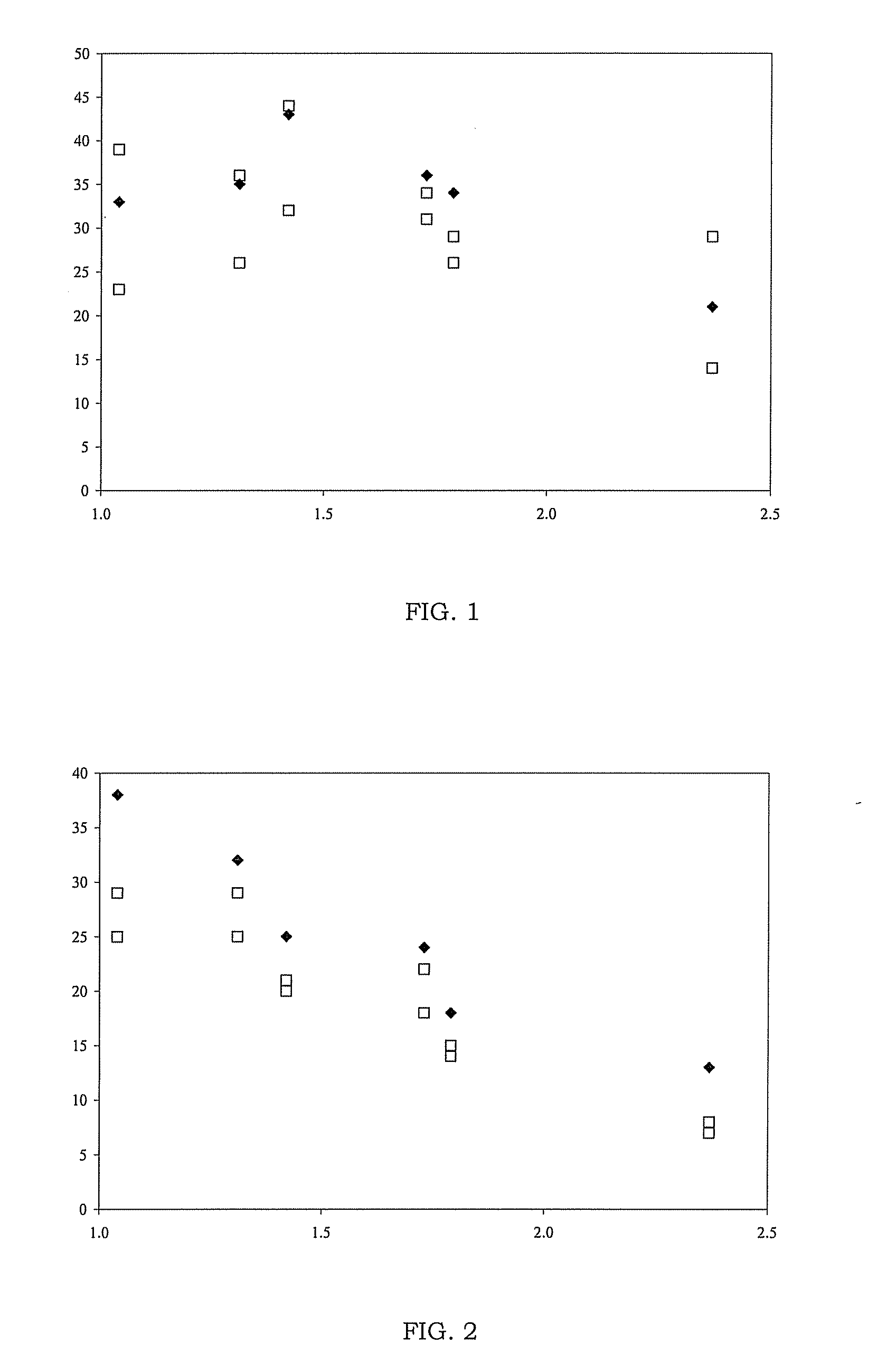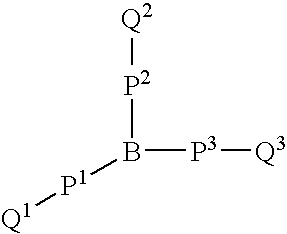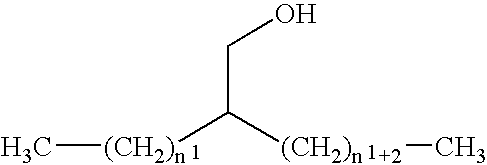Associative thickener combinations
- Summary
- Abstract
- Description
- Claims
- Application Information
AI Technical Summary
Benefits of technology
Problems solved by technology
Method used
Image
Examples
example 1
THICKENER EXAMPLE 1
[0064] A mixture of 77.0 g PEG (Mw=8000) and 150.0 g toluene was dried by azeotropic distillation. The mixture was then cooled to 90° C., and 10.8 g HMDI and 0.2 g dibutyltin dilaurate were added. After 1 hour at 90° C. with stirring, 17.3 g 1-hexadecanol was added. 1-hexadecanol is a linear alcohol. The mixture was then held at 90° C. with stirring for another hour. The resulting solid polymer was isolated after toluene evaporation. The resulting solid polymer, isolated after toluene evaporation, had a Mw of 19,000 and a Mn of 15,500 as determined by SEC.
example 2
THICKENER EXAMPLE 2
[0065] A mixture of 77.0 g PEG (Mw=8000) and 150.0 g toluene was dried by azeotropic distillation. The mixture was also cooled to 90° C., and 10.8 g HMDI and 0.2 g dibutyltin dilaurate were added. After 1 hour at 90° C. with stirring, 17.3 g Isofol® 16 (Sasol, Inc.), a branched alcohol, was added. The mixture was then held at 90° C. with stirring for another hour. The resulting solid polymer, isolated after toluene evaporation, had a Mw of 18,600 and a Mn of 14,800 as determined by SEC.
example 3
THICKENER EXAMPLE 3
[0066] A mixture of 77.0 g PEG (Mw=8000) and 150.0 g toluene was dried by azeotropic distillation. The mixture was then cooled to 90° C., and 10.8 g HMDI and 0.2 g dibutyltin dilaurate were added. After 1 hour at 90° C. with stirring, 19.7 g Isofol® 18T (Sasol, Inc.) was added. Isofol® 18T is a mixture of the following branched alcohols, 2-hexyl 1-decanol, 2-octyl 1-decanol, 2-hexyl 1-dodecanol and 2-octyl 1-dodecanol. The mixture was then held at 90° C. with stirring for another hour. The resulting solid polymer, isolated after toluene evaporation, had a Mw of 18,800 and a Mn of 15,100 as determined by SEC.
PUM
| Property | Measurement | Unit |
|---|---|---|
| Percent by mass | aaaaa | aaaaa |
| Angle | aaaaa | aaaaa |
| Weight | aaaaa | aaaaa |
Abstract
Description
Claims
Application Information
 Login to View More
Login to View More - R&D
- Intellectual Property
- Life Sciences
- Materials
- Tech Scout
- Unparalleled Data Quality
- Higher Quality Content
- 60% Fewer Hallucinations
Browse by: Latest US Patents, China's latest patents, Technical Efficacy Thesaurus, Application Domain, Technology Topic, Popular Technical Reports.
© 2025 PatSnap. All rights reserved.Legal|Privacy policy|Modern Slavery Act Transparency Statement|Sitemap|About US| Contact US: help@patsnap.com



